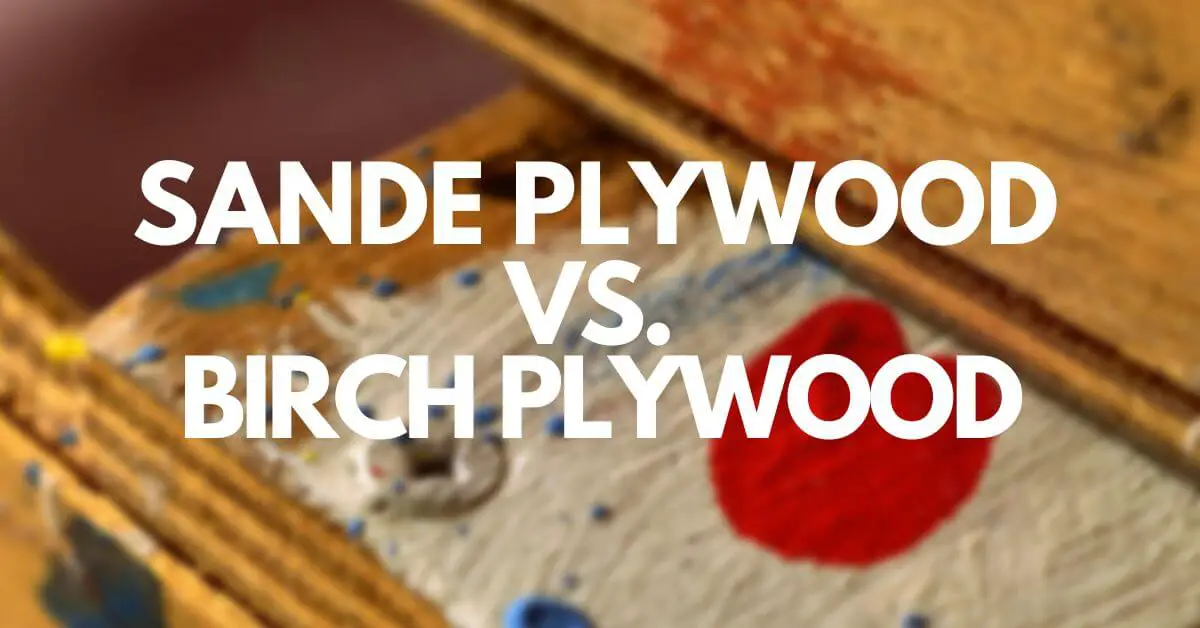Sande Plywood is more resistant to moisture and weather than Birch plywood. Birch plywood is suitable for interior uses, while Sande plywood is for marine uses.
Both plywood are made of two different types of wood whose physical properties are different from each other. So choose the right material for your project which can fulfill your purpose.
What is Sande Plywood?
Sande plywood is marine-grade plywood made from multiple thin layers of Sande hardwood (“Sande” is a wood species). It has excellent moisture and water-resistant properties.
Sandy wood has high strength and durability. It becomes even more stable in plywood form. Sande wood and paper (pulpwood) are widely used for outdoor furniture, and paper (pulpwood).
What is Birch Plywood?
Birch plywood is constructed from three or more thin layers of birch hardwood. It is known for its excellent strength, grain texture, durability, and finishing.
Birch plywood is resistant to bending and warping and is less prone to warping and swelling than regular plywood.
There is some difference between Birch plywood and Sande plywood.
| Parameter | Sande Plywood | Birch Plywood |
| Price | Expensive | Moderately expensive |
| Durability | Extreme durable | Durable |
| Best for | Marine uses | Interior uses |
| Made with | Sande hardwood | Birch hardwood |
Uses
Sande plywood is used for marine applications such as boat building and decks. It is used not only for marine applications but also for making bathroom and kitchen doors. It is used in all places where applications are exposed to moisture and water.
Birch plywood is mainly used for furniture, cabinets, shelving, wall panels, tables, and interior projects. Birch plywood has excellent shock-resistant properties. It is a perfect option for making durable furniture.
Birch plywood can be used in all places where beauty and strength matter. But there is no direct contact with moisture.
Working
Sande and Birch plywood are easier to work with. It can be painted, stained, or laminated. These plywoods hold nails and screws well.
If you are planning to stain, Birch Plywood can be stained more easily than Sande Plywood. Birch plywood absorbs stain uniformly because it has a closed grain like maple.
Sande plywood has open pores like oak, which must be filled before being stained or painted.
Strength and Durability
Sande plywood is relatively strong and durable, making it suitable for various structural and load-bearing applications.
Birch Plywood is more resistant to wear and tear than regular plywood because it has good resistance to moisture and abrasion.
Density and Weight
Sande plywood is generally lighter in weight than birch plywood, birch plywood is denser and heavier than Sande plywood. So you may face some difficulty working with birch plywood.
The density and weight of plywood depends on the core wood used. Here, Sande wood has a Janka hardness value of 810 lbf (3,620 N) while Yellow Birch has a hardness value of 1,260 lbf (5,610 N).
Price and Availability
Birch plywood is easily available in all countries at affordable prices. You may have to pay a higher price for Sande Plywood.
Both plywoods are available in many different grades and thicknesses on the market. They are available in 3/4, 1/2, and 1/4-inch thicknesses. Higher grades are generally used for furniture and outdoors because high grades do not have knots and defects.
Conclusion
Selecting between sande plywood and birch plywood depends on the specific requirements of your project. If you prioritize cost-effectiveness and are looking for a plywood that performs well in structural applications, sande plywood may be a suitable option.
On the other hand, if you need smoother finish and light colored plywood for high-quality projects, birch plywood is a better choice.

